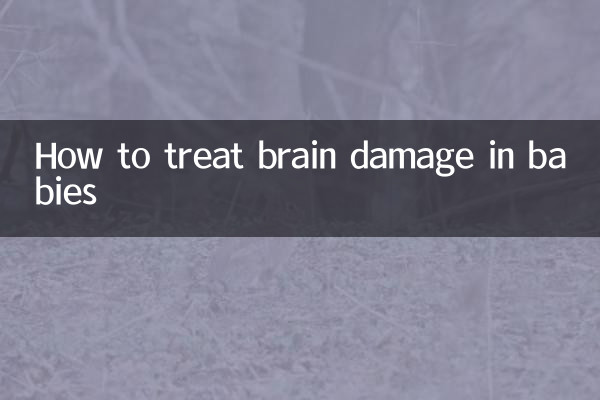How to treat brain injury in babies: Latest research and practice guide
Infant brain damage is a common and serious health problem in the newborn period and may be caused by factors such as hypoxia, premature birth, infection or trauma. In recent years, the medical community has made significant progress in diagnosis and treatment. This article combines popular topics and clinical data across the network for the past 10 days to provide structured information to parents and medical staff.
1. Common causes of brain damage in babies

| Cause Type | Percentage | High risk factors |
|---|---|---|
| Hypoxic ischemic encephalopathy (HIE) | 40%-50% | Complications of delivery, placenta premature |
| Brain damage to premature babies | 30%-35% | Greedy week <32 weeks, low weight |
| Intracranial hemorrhage | 15%-20% | Manure injury, coagulation disorder |
2. Frontier treatment plans (latest in 2024)
According to a recent review of the international pediatric journal The Lancet Child & Adolescent Health, the following treatments have been proven to be effective:
| Treatment method | Applicable stage | Efficient |
|---|---|---|
| Sub-hypothermia treatment (children with HIE) | Within 6 hours of birth | Reduce mortality by 25% |
| Stem cell therapy | Experimental stage | Improved exercise function by 50%+ |
| Neurotrophic drugs (such as erythropoietin) | After the acute phase | Cognitive improvement rate 35% |
3. Key time window for rehabilitation intervention
The latest American Academy of Pediatrics (AAP) guidelines emphasize:
| Type of intervention | Golden Period | Core objectives |
|---|---|---|
| Physical therapy | 0-6 months | Prevent muscle contractures |
| Language stimulation | 3-12 months | Promote neural network reconstruction |
| Cognitive training | 6-24 months | Improve execution function |
4. Home Care Key Points
1.Feeding Management:Breastfeeding is preferred, and high-calorie formula should be added if necessary (requires doctor's guidance)
2.Environmental regulation:Avoid strong light/noise stimulation and maintain appropriate temperature and humidity
3.Monitoring indicators:Record daily food intake, awakening cycle, abnormal movements (such as convulsions)
5. Controversy and breakthroughs
The recently hotly debated mitochondrial transplant therapy (MIT) has shown in animal experiments:
• Repairs up to 60% of damaged neurons
• It is expected to enter the clinical trial stage in 2025
Conclusion:Treatment of infant brain injury requires multidisciplinary collaboration, and parents should intervene in the rehabilitation plan as soon as possible. It is recommended to regularly follow-up neurodevelopmental assessment (once every 3 months) and adjust the treatment plan in a timely manner.
Note: The data in this article is as of July 2024. Please follow the doctor's advice for specific treatment.

check the details

check the details